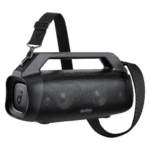Ground-Penetrating Radar, better known as GPR, is a technology used to image the subsurface. The technology is exceptionally effective in detecting underground voids and objects. Given the cost-effectiveness and noninvasive nature of the technology, GPR has become the preferred underground surveying technology in a wide variety of fields.
That being said, you need to understand the working mechanisms of the ground-penetrating radar to appreciate its potential benefits. Continue reading to learn more. Also, visit our site to learn more about Precision Utility Mapping in the UK and its benefits.
The Physics of Ground-Penetrating Radar
The technology uses ground-penetrating radar, with the survey results displayed on the screen.
Ground-penetrating radar can provide a comprehensive subsurface image by transmitting the electromagnetic into the concrete surface, road, soil, or other ground material. The device emits pulses of microwaves, typically within the 1 and 1000 MHz bands. The pulses of the microwave penetrate the material, where they’re refracted, reflected, or scattered as they encounter changes in the material. Through this mechanism, they can detect anomalies, voids, and objects.
The object’s size and density determine how the waves of impulses react. Additionally, the strength of the reflection (or its amplitude) will depend on the difference in conductivities of the material and the signal waves. The GPR receiver picks the altered signal and records it with the signals’ two-way travel time. Finally, the GPR device takes the relative permittivity, travel time, and amplitude to create a depth scale of the ground the technician is scanning.
The GPR unit uses specialized software to translate the raw data in real time into an imagery map that provides an accurate location of all subsurface elements. The technicians are trained to interpret the images that appear as static black-and-white images. The anomalies appear as hyperbolas.
The Advantages of Using GPR for Subsurface Imaging
#1. Identify Underground Pipes And Cables
GPR is the go-to technology in industries and applications that need to know what lies beneath the ground surface. The technology is cost-effective for use in different projects. Additionally, the tech is safe and ideal for use in public spaces and landscaped areas.
GPR is beneficial owing to ease of execution, extensive use cases, and varied capabilities.
#2. Ease of Execution
Another advantage of GPR is the ease of execution it offers. A trained technician operating a single GPR can image a large area within a short time frame.
The imaging process involves moving the unit over the target location and following the survey lines. The device will transmit the pulses of microwaves into the ground. As the microwave moves deep into the ground, the signal is scattered, reflected, and/or refracted back if it encounters an anomaly. Obviously, the nature of signal interference will depend on the object’s density. The receiver then registers and records any returning signal.
The technician makes a series of consecutive scans to capture data from the target area comprehensively and in detail. The onboard software processes the data and creates a digital image, creating a map of the subsurface voids, structures, and other anomalies.
The resulting image is typically a colorful band, or a black or white static, and hyperbolas present the anomalies. As such, only trained GPR technicians can interpret and make the data usable. In some cases, technicians can interpret the data in real-time, allowing them to note areas of concern immediately.
An additional plus is the portability of the GPR scan. The devices a usually small and access and scan the hard-to-reach spots. Some units are also designed to be inherently easy to dismantle and ship to remote areas.
Detection Capabilities
A typical GPR can identify anomalies, including voids and infrastructural installations in the soil, concrete, and soil. The scans can identify metal and nonmetal objects. It can also identify variations in the ground composition.
GPR scans can detect the following:
Clay
PVC
Concrete
Plastic
Metal
Wood
Water
GPR can also alert the technicians of recent soil conditions changes resulting from intrusion by foreign objects and/or digging. On the capabilities front, most GPR scanners are capable of scanning a wide variety of surfaces, including soil and concrete.
Furthermore, since the scanner can use different frequencies during the scanning process, microwaves can penetrate and scan to varying depths or be adapted to match the composition of the ground. Handheld GPR scanners are also capable of scanning ceilings and vertical surfaces.
Typically, the scanner can determine the thickness and depth of the subsurface anomalies. Additionally, highly advanced GPR scanners are integrated with GPS systems and mapping capabilities, allowing technicians to generate an accurate map with correlating coordinates of the target area.









